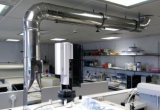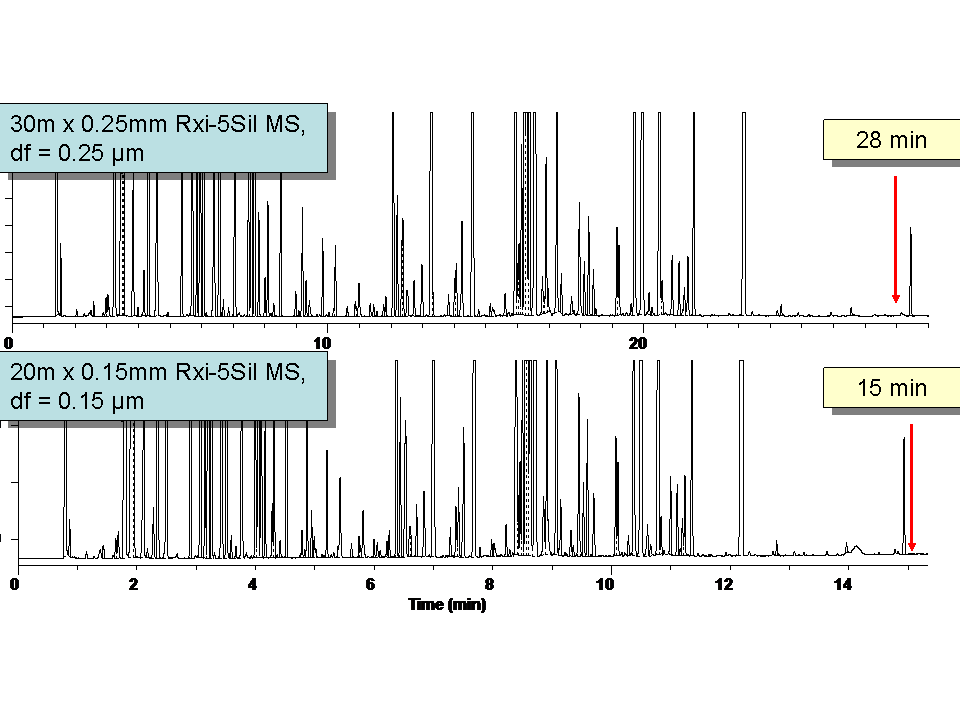Tech Tip 20: Miniaturisation in GC laboratories – Part VI
Submitted by admin on
 Method miniaturisation is the squeezing of as many instrumental and analytical parameters as possible to optimise efficiency. Variables that can be examined include extraction solvent, extraction technique, injection onto the column, separation on column, quantification via the detector and finally the cycle time of one analytical run. As we strive to make the method more robust we should improve quality, obtain an equivalent if not better Limit of Detection (LOD) and deliver the result more quickly and hence more cheaply.
Method miniaturisation is the squeezing of as many instrumental and analytical parameters as possible to optimise efficiency. Variables that can be examined include extraction solvent, extraction technique, injection onto the column, separation on column, quantification via the detector and finally the cycle time of one analytical run. As we strive to make the method more robust we should improve quality, obtain an equivalent if not better Limit of Detection (LOD) and deliver the result more quickly and hence more cheaply.
Cycle time of one analytical run

 Method miniaturisation is the squeezing of as many instrumental and analytical parameters as possible to optimise efficiency. Variables that can be examined include extraction solvent, extraction technique, injection onto the column, separation on column, quantification via the detector and finally the cycle time of one analytical run. As we strive to make the method more robust we should improve quality, obtain an equivalent if not better Limit of Detection (LOD) and deliver the result more quickly and hence more cheaply.
Method miniaturisation is the squeezing of as many instrumental and analytical parameters as possible to optimise efficiency. Variables that can be examined include extraction solvent, extraction technique, injection onto the column, separation on column, quantification via the detector and finally the cycle time of one analytical run. As we strive to make the method more robust we should improve quality, obtain an equivalent if not better Limit of Detection (LOD) and deliver the result more quickly and hence more cheaply.


 Method miniaturisation is the squeezing of as many instrumental and analytical parameters as possible to optimise efficiency. Variables that can be examined include extraction solvent, extraction technique, injection onto the column, separation on column, quantification via the detector and finally the cycle time of one analytical run. As we strive to make the method more robust we should improve quality, obtain an equivalent if not better Limit of Detection (LOD) and deliver the result more quickly and hence more cheaply.
Method miniaturisation is the squeezing of as many instrumental and analytical parameters as possible to optimise efficiency. Variables that can be examined include extraction solvent, extraction technique, injection onto the column, separation on column, quantification via the detector and finally the cycle time of one analytical run. As we strive to make the method more robust we should improve quality, obtain an equivalent if not better Limit of Detection (LOD) and deliver the result more quickly and hence more cheaply.

 Modern autosamplers have become much more versatile and sophisticated than their original antecedents, so that they are not merely a device for replacing manual injection, they can now offer many options and improvements to the introduction of liquid and gaseous sample aliquots into a gas chromatograph. However, as with most analytical equipment, each function needs fine tuning to produce the best results.
Modern autosamplers have become much more versatile and sophisticated than their original antecedents, so that they are not merely a device for replacing manual injection, they can now offer many options and improvements to the introduction of liquid and gaseous sample aliquots into a gas chromatograph. However, as with most analytical equipment, each function needs fine tuning to produce the best results. 